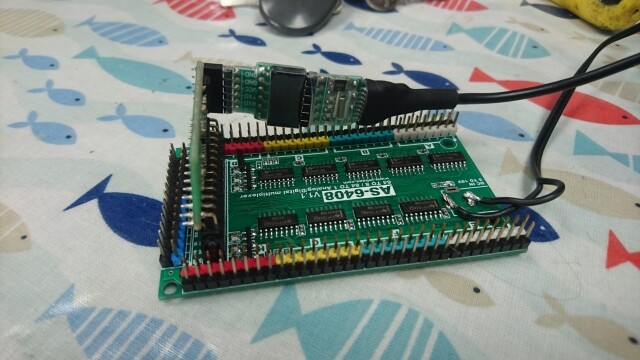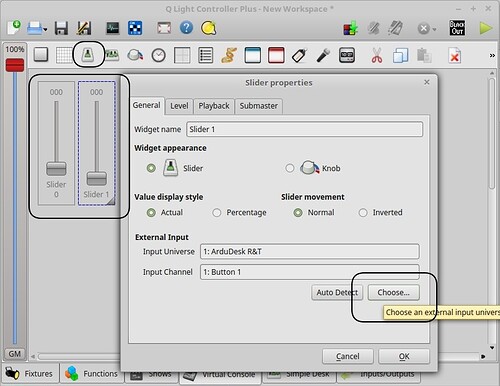And this is the bare bones of my actual full script.
It reads 8x8 Mux channels and sends them over serial to Hairless.
I had actually found the serial.write solution (credited) yesterday afternoon, but had forgotten to send myself it...
There's probably some unused bits and potentially a bit more tidying up to do..
The board I am using is fantastic, packing the 8x8 mux and an arduino together with no additional interconnection needed.
Cheers
TT
/* ====================AS-6408 Demo code====================================
// Credit inhaos + TwinTurbo
www.inhaos.com
Hardware: AS-6408: 64 to 8 or 64 to 1 Analog Digital Multiplexer
http://www.inhaos.com/product_info.php?products_id=154
UNO CORE: Arduino UNO CORE with ATMega328P
http://www.inhaos.com/product_info.php?products_id=143
===========================================================================*/
//Port definitions
int ctr_A = 6 ;
int ctr_B = 8 ;
int ctr_C = 10 ;
int sig_Ctr_A = 5 ;
int sig_Ctr_B = 7 ;
int sig_Ctr_C = 9 ;
#define APP_RECV_BUFFER_SIZE 100
int App_RecvLen = 0;
bool App_RcvdFirstFlag = false;
bool App_RecvFinishFlag = false;
char App_AckCommand = 0;
char App_RecvBuffer[APP_RECV_BUFFER_SIZE];
int AdcDataArray[8];
int mux = 0;
int muxchan = 0;
void setup() {
// put your setup code here, to run once:
Serial.begin(9600);
//Initialize control ports
pinMode(ctr_A, OUTPUT);
pinMode(ctr_B, OUTPUT);
pinMode(ctr_C, OUTPUT);
pinMode(sig_Ctr_A, OUTPUT);
pinMode(sig_Ctr_B, OUTPUT);
pinMode(sig_Ctr_C, OUTPUT);
digitalWrite(ctr_A, HIGH);
digitalWrite(ctr_B, HIGH);
digitalWrite(ctr_C, HIGH);
digitalWrite(sig_Ctr_A, HIGH);
digitalWrite(sig_Ctr_B, HIGH);
digitalWrite(sig_Ctr_C, HIGH);
//Adc ports initialize
}
void loop() {
// Set the Mux
// Set a varialble for that
// Read the mux/send the data over MIDI
// Delay
// Repeat for all MUXES.
// Note, this can be put in a loop but it's shown here as WORKINGS
//This sets the mux we are going to use out of the 8 available on the AS6408
// call function SetChn(1)
SetChn(1);
// set a variable of mux for later use.
mux=0;
// read the mux lines using the function ReadAdcAll()
ReadAdcAll();
// Put in a little delay
delay(200);
// Repeat for the other 7 mux's
mux=8;
SetChn(2);
ReadAdcAll();
delay(200);
mux=16;
SetChn(3);
ReadAdcAll();
delay(200);
mux=24;
SetChn(4);
ReadAdcAll();
delay(200);
mux=32;
SetChn(5);
ReadAdcAll();
delay(200);
mux=40;
SetChn(6);
ReadAdcAll();
delay(200);
mux=48;
SetChn(7);
ReadAdcAll();
delay(200);
mux=56;
SetChn(0);
ReadAdcAll();
delay(200);
}
boolean SetChn(int chn)
// SetChn sets the 3bit Multiplexer selection on the 6408 out of the 8 available Muxes.
// using the value passed by SetChn in the void loop.
{
switch (chn)
{
// if the value passed from the void loop is zero we set the 3 pins DigitalWrite High, and then stop
// further processing with a break.
case 0:
digitalWrite ( ctr_A , HIGH ) ;
digitalWrite ( ctr_B , HIGH ) ;all the A0-A7
digitalWrite ( ctr_A , HIGH ) ;
break;
// Do the same for the other values passed, altering the 3 bit binary state of the pins to select the muxes...
//
case 1:
digitalWrite ( ctr_A , HIGH ) ;
digitalWrite ( ctr_B , HIGH ) ;
digitalWrite ( ctr_C , LOW ) ;
break;
case 2:
digitalWrite ( ctr_A , HIGH ) ;
digitalWrite ( ctr_B , LOW ) ;
digitalWrite ( ctr_C , HIGH ) ;
break;
case 3:
digitalWrite ( ctr_A , HIGH ) ;
digitalWrite ( ctr_B , LOW ) ;
digitalWrite ( ctr_C , LOW ) ;
break;
case 4:
digitalWrite ( ctr_A , LOW ) ;
digitalWrite ( ctr_B , HIGH ) ;
digitalWrite ( ctr_C , HIGH ) ;
break;
case 5:
digitalWrite ( ctr_A , LOW ) ;
digitalWrite ( ctr_B , HIGH ) ;
digitalWrite ( ctr_C , LOW ) ;
break;
case 6:
digitalWrite ( ctr_A , LOW ) ;
digitalWrite ( ctr_B , LOW ) ;
digitalWrite ( ctr_C , HIGH ) ;
break;
case 7:
digitalWrite ( ctr_A , LOW ) ;
digitalWrite ( ctr_B , LOW ) ;
digitalWrite ( ctr_C , LOW ) ;
break;
default:
return false;
break;
}
return true;
}
void ReadAdcAll()
// Reads through the 8 mux channels on the selected mux and and initiates the message send.
{
// Read the Mux to an array
// Variable for the mux channel to read 0-7
int i;
// variable for the value read from the mux 0-1023
int y;
// loop through values 0+1+1... until i = less than 8
for(i = 0; i < 8; i++)
{
// fill and array the value i and the value read from Analoug A0
AdcDataArray[i] = analogRead(A0 + i);
}
;
// we could actualy do away with this and the array above all together...
// read the array and call the Serial Write.
for(i = 0; i < 8; i++)
{
// Analog 1023 to MIDI 127 conversion
// The output of the analogue read is from 0-1023, Midi understands values 0-127 . So divide the analogue value by 8
y = AdcDataArray[i]/8;
// the value mux was set int the main void loop,
// we add this to i to get the correct channel in the range 1-64
muxchan = mux + i;
// We then send 3 values to the MIDImessage function
// 191 we know is the CC value for the continus controller.
// muxchan we have set above to specifiy the channel we are working on
// y is the value determined from the mux read and division above.
MIDImessage(191, muxchan, y); //pass values out through standard Midi Command
}
}
void MIDImessage(byte command, byte data1, byte data2) //pass values out through standard Midi Command
// Credit https://tttapa.github.io/Arduino/MIDI/Chap04-MIDI-Controller.html
{
//write the values provided from ReadAdcAll above..
Serial.write(command);
Serial.write(data1);
Serial.write(data2);
}








